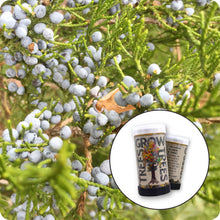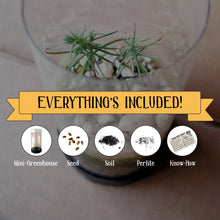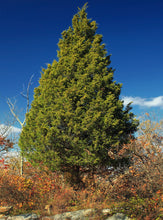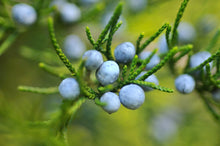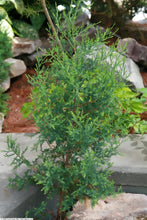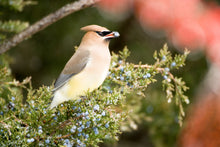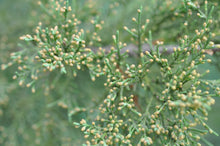
- Grow your own tree from seed!
- Includes absolutely everything you need to grow Eastern Red Cedar (Juniperus virginiana) from seed: seeds, growing medium, a mini-greenhouse, and detailed instructions
- 100% guaranteed: If your seed fails to germinate or your seedling perishes, we are happy to provide free replacement seed
- Great for kids and adults, amateurs to experts!
- A universal symbol of life, regrowth and recovery, enduring friendships and new beginnings, a tree is a wonderful gift that will only grow in value, meaning, and beauty
About Eastern Redcedar
Eastern Redcedar, Juniperus virginiana, isn’t really a cedar at all, but a small- to medium-sized juniper tree native to eastern North America, from southeastern Canada to the Gulf of Mexico. Other common names include Eastern Juniper, Red Juniper, and Aromatic Cedar. An especially common species in the Great Plains region of the United States, Eastern Redcedar is often found growing alongside roadways and fences, and scattered across open fields.
Growing to heights between 20 – 70 feet, with trunk diameters reaching 1 – 3 feet across, this is typically an upright, symmetrical, and neatly conical evergreen tree — in the Missouri, Oklahoma and Arkansas Ozarks, Eastern Redcedar is even used as a Christmas Tree species. Foliage appears in two distinctive forms: new growth is needle-like and spiky, while older, scale-like leaves press tightly against the twig. Cones, which can grow up to 0.25 inches-long, closely resemble berry-like fruit: globose, small, and dark purple-blue with a waxy sheen. They are a favorite of the Cedar Waxwing, and support a host of other wildlife, including wild turkeys, bears, rabbits, foxes, coyotes, and deer. Bark is reddish-brown and fibrous, exfoliating in narrow strips.
The wood of Eastern Redcedar has traditionally been used in fence building for its rot resistance, and in the construction of chests and closets for its fragrance and moth-repellant qualities. Native Americans once used the wood to mark out hunting territories. The city of Baton Rouge, Louisiana (which literally means “red stick”), was so-named by the French for these red-colored marker-poles.
A particularly hardy pioneer species, Eastern Redcedar thrives under adverse conditions — both drought tolerant and cold tolerant, growing equally well in dry, acidic, rocky, sandy, and clay substrates — so much so that during the Dust Bowl drought of the 1930s, the Prairie States Forest Project encouraged farmers to plant wind breaks made of Eastern Redcedar.
Growing to heights between 20 – 70 feet, with trunk diameters reaching 1 – 3 feet across, this is typically an upright, symmetrical, and neatly conical evergreen tree — in the Missouri, Oklahoma and Arkansas Ozarks, Eastern Redcedar is even used as a Christmas Tree species. Foliage appears in two distinctive forms: new growth is needle-like and spiky, while older, scale-like leaves press tightly against the twig. Cones, which can grow up to 0.25 inches-long, closely resemble berry-like fruit: globose, small, and dark purple-blue with a waxy sheen. They are a favorite of the Cedar Waxwing, and support a host of other wildlife, including wild turkeys, bears, rabbits, foxes, coyotes, and deer. Bark is reddish-brown and fibrous, exfoliating in narrow strips.
The wood of Eastern Redcedar has traditionally been used in fence building for its rot resistance, and in the construction of chests and closets for its fragrance and moth-repellant qualities. Native Americans once used the wood to mark out hunting territories. The city of Baton Rouge, Louisiana (which literally means “red stick”), was so-named by the French for these red-colored marker-poles.
A particularly hardy pioneer species, Eastern Redcedar thrives under adverse conditions — both drought tolerant and cold tolerant, growing equally well in dry, acidic, rocky, sandy, and clay substrates — so much so that during the Dust Bowl drought of the 1930s, the Prairie States Forest Project encouraged farmers to plant wind breaks made of Eastern Redcedar.
About Jonsteen's Grow Kits
Growing a tree from seed is a magical and fascinating experience for people of all ages. Our 100% guaranteed Grow Kits provide everything you need to germinate some of the world's largest and most interesting tree species from seed — seeds, growing medium, a mini-greenhouse, and detailed instructions, which lead you through the whole process, from cold-stratifying your seeds to germination and transplanting.
About Jonsteen's 100% Guarantee
If your seed fails to germinate or your seedling perishes, we are happy to provide free replacement seed. We encourage all customers experiencing difficulties growing their trees to contact us through our toll-free "Tree Help Line" (1-888-387-3379).








